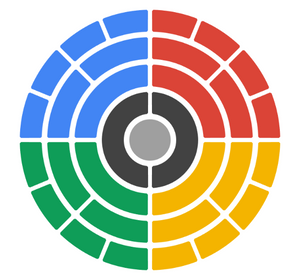Hi everyone, this is Ajay from doglanguage.org and before we dive into learning how to bark, I will briefly tell you about my background and how I discovered rhythmical communication.
I am a web developer and my specialty is application programming interfaces. These interfaces allow different systems to communicate even if they are written in different languages. My job is to learn how both systems work, what inputs and outputs they have and then create a plug-and-play software that will help translating the data between systems.
Interfaces can be different - for example, screens and keyboards, musical instruments or even biological organs such as hands, mouth or ears can act as communication interfaces.
Due to the nature of my job, I always think about how I can improve communication between systems, and the most common interface that I use every day is the computer keyboard.
Keyboards as we know them were invented in 1873, long before computers. The buttons layout and the whole device design wasn’t made for convenience, it was defined by mechanical requirements of early typewriters.
In 2007 Apple squeezed an image of an ancient typewriter and placed it behind a touch screen of a portable TV that they called iPhone. Not only was that the worst day in the history of user interfaces, it was the reason why I started to develop my own, better keyboard.
My idea was to get rid of the keyboard completely and to use a portable EEG device that measures brain activity and translates it into letters. The problem was that portable sensors are not yet accurate enough to detect where exactly a brain activity happened. Instead, they can only measure the average activity level of the whole brain.
Having such limited input was challenging, but after years of brainstorming and experimenting, I managed to create an interactive alphabet map with a jumping cursor.
By briefly concentrating, a user could control it with what I now call “mental taps”.
When a mental tap is detected, a cursor starts running on the map. Each of the following mental taps will force the cursor to jump and change it's direction.
This way each letter now had a unique path and a rhythm associated with it.
To memorize all the unique rhythms I created a mobile game and according to my measurements, anyone can learn all of the rhythms in just 30 minutes of playing! You can try the game at hapt.app/game if you want to test how fast it works for you.
I tested the game on my friends and family and that’s when the weird things started to happen.
Once we memorized all of the rhythms we discovered several weird abilities:
We could communicate through touch without any devices. One person can tap another one’s shoulder and they will understand each other.
We could type letters while blindfolded, and read messages from phone vibration.
We began to hear familiar rhythmical patterns where we didn’t expect - in some insect sounds, bird chirping and dog barks.
And that’s how I discovered order in what seemed to be random dog barks.
Subscribe to this channel if you want to know what happened next and please share this video with someone who loves dogs!
Also visit doglanguage.org to find out how you can help and participate in the research.
